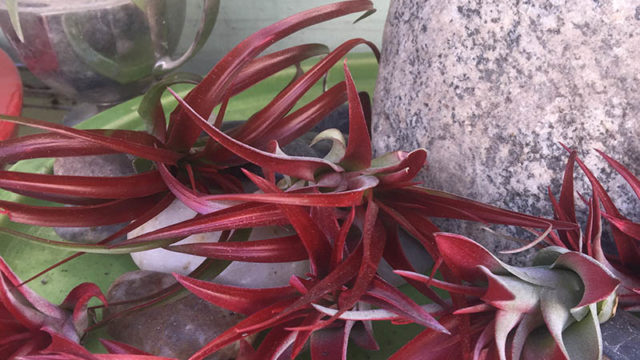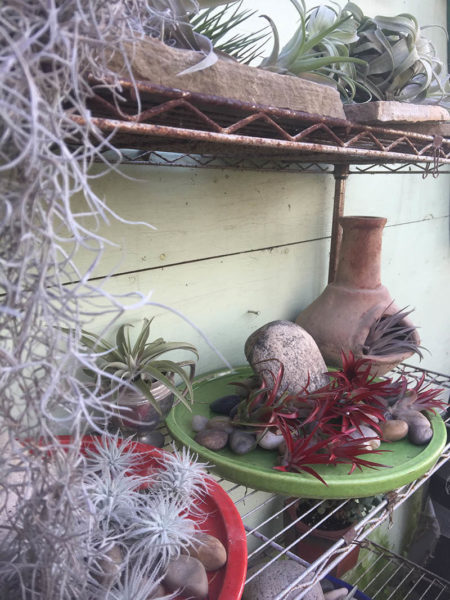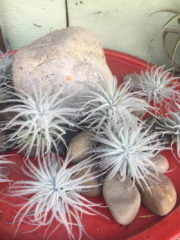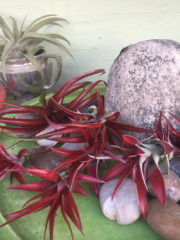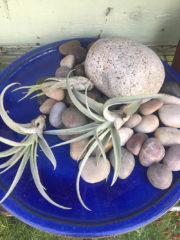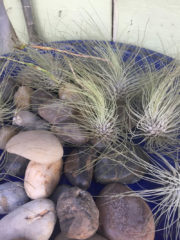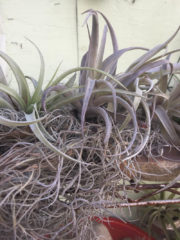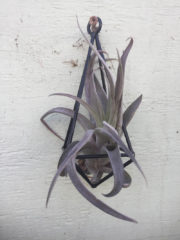Air plants make it easy to create unique living wall and table landscapes. Since they don’t require soil, even the smallest container can be made to hold an air plant.
Take a look around the second hand store for funky vintage tea cups, use driftwood found on a beach, or create something from wire to hold different colors and textures of Tillandsias.
Click here for some inspiring ideas from our Pinterest board! The possibilities are endless.
CARING FOR AIR PLANTS
Tillandsias are very hardy and require much less attention than other house plants. Provided the atmosphere is not too dry, they can survive with water misting and an occasional bath.
• Give them bright, filtered light and protect them from frosts.
• Growing them indoors where the air is dry, you will need to submerge the plant in water for 2-3 hours about every two weeks.
• In a shaded-location, you can use a soaking mist once or twice a week in summer, once a month in cooler weather.
LIGHT
Bright filtered light is the general rule, and the higher the humidity of the air the higher light will be tolerated. Outdoors the silvery-leafed varieties (ex: Xerographica, Harissii) can usually be grown in full sun, but in an un-shaded greenhouse or close to un-shaded glass in a sunny room or conservatory the same plant will quickly burn because the air dries out like an oven. In a very sunny spot indoors they may need daily misting or weekly soaking depending on which method you prefer.
DISPLAYS
Water your new plant by soaking 20-30 minutes. Take note of the size and color and you should see how happy the plant is. Keep this “picture” in your mind.
The key is to judge the drying time. If you over water the plant will die. Remember what your plant looked like after soaking? If it has lost that happy healthy look, soak it for 30 minutes to an hour, shake, allow to almost completely dry and replace in container.
Allow your plant to dry almost completely before placing in a glass globe or similar decorative display, and do not place directly in front of a window where they get direct sun. Remember glass will intensify the sunlight and the heat. Indirect light is best and some will even grow in low to moderate light.
Tillandsias can grow into clumps if the pups are left to grow on the parent plant. Clumps can also be created by wiring multiple plants together, as they’ll begin to grow into and around each other.
Since air plants do not require soil to grow, they can be mounted to almost any surface for display. Use the base of the plant as the mounting area. Adhesives like E-6000, Liquid Nails, or Goop work great, as well as fishing line or any non-copper wire.
When choosing a mounting surface remember that your plant will still need to be watered, so something waterproof or water-resistant will be the best choice for a long-term display method.
